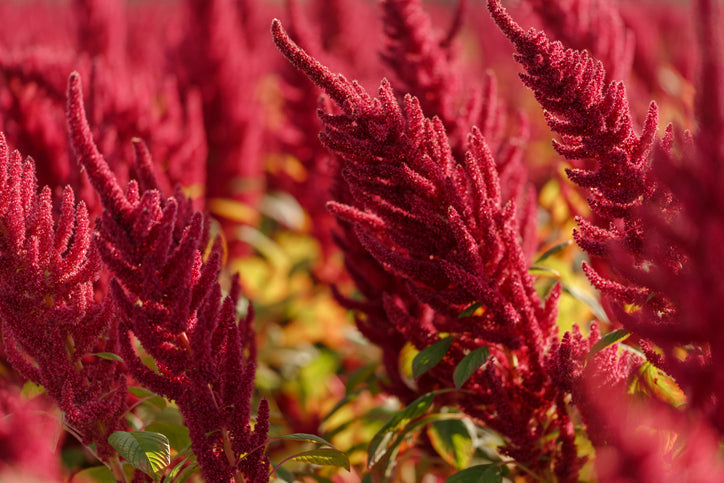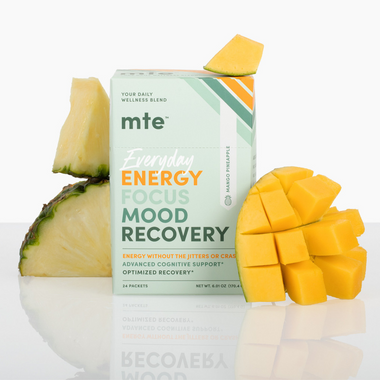
Amaranth as a Superfood: An Imposter with a lot to Offer
Amaranth (Amaranthus spp.) is a superfood grain packed with nutritional compounds, much like rice and maize. It’s sometimes classified as a cereal grain because of the nutritive similarities between amaranth and cereal grains. However, just like Siberian ginseng isn’t actually ginseng, amaranth isn’t a cereal grain. It’s just awesome in similar ways.
Amaranth is one of those super-plants where different parts of the plant have different uses. The flowers of the amaranth plant are very pretty, and come in different bright colors, so they’ve traditionally been used for decoration/landscaping as well as fabric dye in ancient times. If burnt, its ashes can be used as a seasoning similar to salt. The plant’s seeds are where it’s at as far as this superfood’s culinary use as a grain? Cereal?
We’re just going to call it a cereal – it’s easier this way.
The amaranth family of plants consists of over 75 species found growing wild on 5 continents. The plant is cold and drought resistant, and it doesn’t need good soil in order to thrive, so it thrives pretty much everywhere. There are at least 15 species of this superfood native to Europe, Africa and Asia, and another 60+ species native to the Americas.
So let’s start there.
The Americas’ Most Ancient Grain?
Amaranth has been used in the Americas since plant domestication came to forest management and small-scale agriculture. This “dawn” of purposeful, selective cultivation is called the Neolithic Revolution, and describes a worldwide period that began about 10000 years ago when people became more sedentary and began to cultivate food and livestock at permanent settlements.
Amaranth was among the first indigenous grains domesticated in all of the Americas. In an Argentinian rock shelter in South America, the first evidence of domesticated amaranth occurs in stratigraphy dating to 7200-7900 BP. In Central America, the first domesticated amaranth seeds we find are from the Tehuacan Valley of Mexico, dating to 6000 YBP.
Amaranth was also an integral part of North American ancient domesticate complexes; it’s found throughout the Southwest and Midwest, and evidence of domestication and use span all the way up to the Hopewell period of the Ohio Valley.
Traditional Uses of Amaranth Across Cultures
It’s called a superfood for a reason; this little-known cereal is widely used across continents and time. Some uses include:
- China: Parts of the plant are used for rashes, infections and migraines.
- Ethiopia: The amaranth seeds are made into a drink for new mothers and their babies.
- Mauritania & West US: The seeds are ground into flour and used for cakes.
- Mexico & Vietnam: The seeds are cooked and used in traditional dishes.
- Senegal: The leaves are used as an antiparasitic.
- Uganda: The leaves are used as a potherb and cooked for their bitter taste.
What accounts for the widespread and varied use of the amaranth plant? Its nutrition profile. Amaranth contains all 9 amino acids, making it a complete protein, which are hard to get enough of in our diets. It’s also rich in Omega-3 fatty acids, B vitamins, vitamin E, and fiber. And when it comes to important minerals with high bioavailability, this is really where this superfood shines. Amaranth leaves and seeds contains significant levels of:
- Calcium (hormone balance and bone health)
- Copper (immunity and energy support)
- Iron (blood/circulation and brain health)
- Magnesium (heart health and muscle function)
- Manganese (brain function and nerve support)
- Phosphorous (muscle health and DNA production)
- Selenium (antioxidant support and cell protective)
- Zinc (cognitive function and immune support)
Amaranth, Mesoamerica & the Aztecs
Perhaps the most well-known cultural relationship with amaranth is from Aztec-period Central America. With first use dating between 6000-8000 BP by Central America’s archaic cultures, amaranth was much more than a food source to the Aztecs. At some point, huge amounts of amaranth were accepted as vassal tributes to the imperial power.
Much like the ancient Egyptians so valued honey that it was integrated into their religious practices, so, too, did the Aztecs revere amaranth to the point of associating it with divinity. Specifically, they sculpted statues of their main deity out of amaranth and honey, then worshipped them, broke them apart, and feasted on them at festivals.
Amaranth was also used as a bath ingredient midwives used to bathe newborn babies, among other medicinal and therapeutic uses. In food, amaranth was prepared and used much the same way maize and rice were, like a flour for breads, cooked, popped, or made into an amaranth drink. For millennia, the people of Mesoamerica and amaranth had a good thing going.
Cue the pirates.
Amaranth’s Difficult History in Colonial Mesoamerica
Among the hundreds of cultures imperial powers pillaged and burned were the Aztecs. When Spanish colonials came to Central America, the beautiful, sprawling urban centers amazed them. Well, let’s be honest; they freaked them out. How could these people have accomplished such a thing? They weren’t European! So the invaders destroyed their temples, ruined the plumbing systems, drowned the floating gardens – they burnt cities to the ground and dismantled the Aztec’s ways of life.
One of those ways of life was the whole not-being-Catholic thing. Surprise. And because amaranth was incorporated in Aztec religious life, it had to go, too, along with their god and his temples. Seriously – they were that threatened by a plant. They burnt every amaranth field they could find, and people found to have amaranth in their possession were murdered. There was literally a law at one point that made the penalty for growing amaranth having your hands cut off. Little over-the-top, no?
As a result, amaranth went into hiding, and the benefits this gave the imperial invaders was twofold: Aztec warriors no longer had their strength-supporting superfood, and the culture at-large had a huge part of itself taken away, almost overnight. The Spaniards didn’t eradicate the plant entirely, but in Central America, amaranth was largely lost to all but small pockets of the Mixtecs until the 1970’s.
Modern Use & Clinical Indications for the Benefits of Amaranth
In the last century or so, amaranth has slowly re-emerged, and now you can find it used in diets among cultures all over the Americas as well as Africa. It’s also used in Red No. 2 dye in North America and the EU, and amaranth is included in immune tonics in several rural cultures around the world. New analyses of amaranth cultivation also suggest it to be an important player in the future of sustainable agriculture.
Often equated to quinoa and buckwheat, the pseudo-cereal amaranth boasts 30% more protein density than actual cereals like wheat, oats, rye, and rice. Post-industrial Western cultures are rediscovering the nutritional benefits of this superfood that was pushed into obscurity for nearly 400 years. And with its new popularity in the superfood movement, clinical research follows.
Tons of people will tout how a daily amaranth supplement can boost their energy, clarity and mood, but those are anecdotes. We (and the USDA) need receipts:
- Several studies suggest amaranth seeds may benefit blood pressure and heart health.
- Studies have shown a daily dose of amaranth may lower bad cholesterol without also lowering good cholesterol.
- Clinical research indicates amaranth may increase antioxidant levels and immune responsiveness.
- Early studies suggest that amaranth may have anti-inflammatory effects.
- One rat study found amaranth consumption increased antioxidant activity and acted as a liver protectant.
- Amaranth is high in phenolic acids, which may protect against cancer and cardiovascular disease.
- Amaranth’s high levels of manganese imply it supports more than 300 enzymatic processes in the body.
An in-depth review of the current literature on amaranth revealed a body of clinical research with some pretty strong implications. Studies on various uses of the amaranth plant included exploration and indication amaranth’s functions may include:
- Allergy management
- Anemia management and prevention
- Anti-cancer properties
- Antifungal uses
- Antimicrobial properties
- Antioxidant support
- Antiseptic uses
- Blood pressure management
- Cellular support
- Lipid regulation
- Nervous system support
- Treatment of ulcers
What We Don’t Yet Know About this Potent Superfood
Overall, amaranth is safe to consume, as much as any other nutritious plant. However, some of the things that make amaranth a true superfood are also what make it not the right choice of superfood for everyone. Things to consider before incorporating amaranth into your daily vitality drink or in your diet include.
- Digestive side effects due to the high fiber content
- Inhibits the absorption of calcium and zinc
- Not beneficial for people with gout or kidney disease
- Not beneficial for people with rheumatoid arthritis
- No confirmation amaranth is safe for pregnant/nursing people
- Amaranth should not be reheated, as the nitrates turn to nitrites
Like everything, moderation is key. And so is tailoring your amaranth consumption to what’s safe and effective for you.
MTE: A Safe, Effective Way to Reap the Benefits of Amaranth in a Daily Drink
If super-bitter salads and grain-flour cakes just aren’t your thing, there’s a different way to get all the healthy goodness of amaranth into your daily diet. MTE is a green powder that helps support your energy, mood, cognitive function, stress response, immunity, and more. Along with 12 other adaptogens, nootropics and superfoods, amaranth is a key ingredient that takes this daily “energy” drink way past simply perking you up for a couple hours.
Consider a different path to energy and a path towards complete nutrition; you can do both at the same time. With a complete amino acid profile, important fatty acids, vitamins, minerals, and other body-benefitting compounds, amaranth is just one of the nutrient-packed plants that make MTE a great addition to any daily wellness routine.






